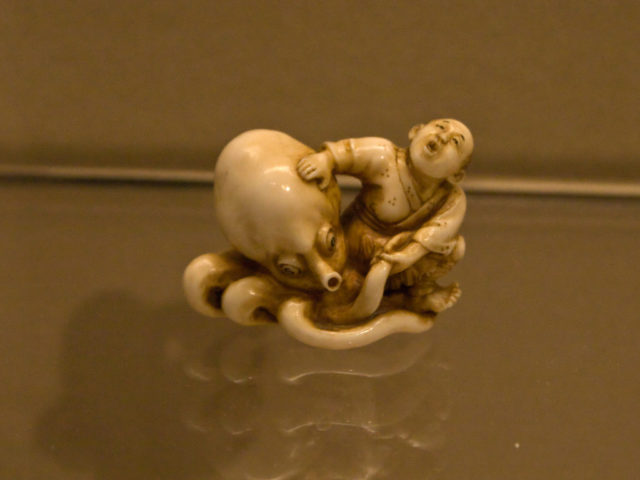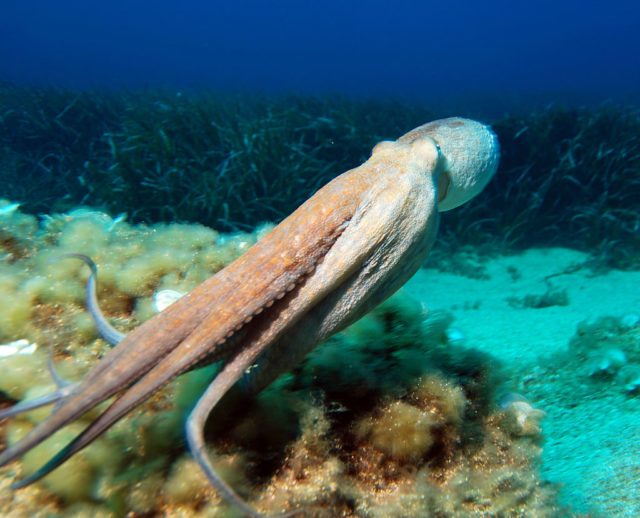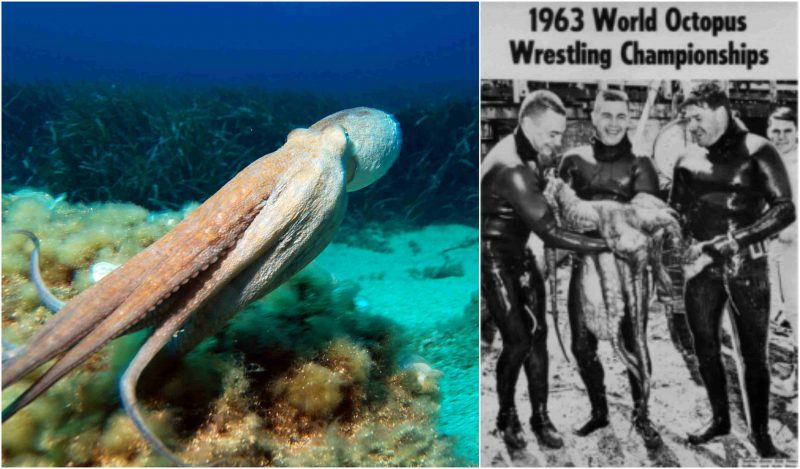Many unconventional sports have existed in the past but were then abandoned because they were either unpopular, unsafe or required the suffering of animals.
Examples include duels with pistols, pigeon hunting, solo synchronized swimming or tug-of-war. There was another sport that was probably very interesting for the spectators but was, however, completely absurd and dangerous for the competitors. This sport was octopus wrestling, and it was once quite popular in the United States around the middle of the last century.
During the 1960s, octopus wrestling was a popular sport in the West Coast of the United States. pic.twitter.com/ATlfedOqSC
— Allan (@allan_cheapshot) February 7, 2017
The first written account of octopus wrestling was in 1949, in the Mechanic Illustrated magazine. The article, called “Octopus Wrestling is My Hobby”, was written by Wilmon Menard, who talks about his trip to Tahiti where he joined a local hunter in his clash with a giant octopus.
The sport reached the height of its popularity in the 1960s and was especially popular on the West Coast of the United States. There were even World Championships organized in Puget Sound, Washington.

The event was seen by approximately 5,000 spectators and was broadcast by TV stations. The awards were given both to individuals and teams who caught the largest octopus. The captured animal would be returned to the sea later, given to an aquarium, or simply eaten. The biggest World Octopus Wrestling Championship was held in April 1963 in Tacoma, when a total of 111 divers took part in the games. 25 giant Pacific octopuses were caught that day, with weights ranging from 4 to 57 pounds.
The sport involved a team of divers who would descend into the water at depths up to 60 feet, where they would encounter the octopus in its den. The teams consisted of 2 or 3 men who would struggle to get free of the tentacles of the animal and drag the octopus to the surface. The suction cups made the sport hard and dangerous, and it could take a long time to extract the animal and up into the open air. Once it was out, the octopus would be measured on a scale, and the team with the biggest animal would win the competition.

The sport’s popularity faded by the mid-1960s when people slowly lost interest in octopus wrestling.
The final blow to the sport was given by the state of Washington, which brought in a law that forbade the harassing of octopus.
